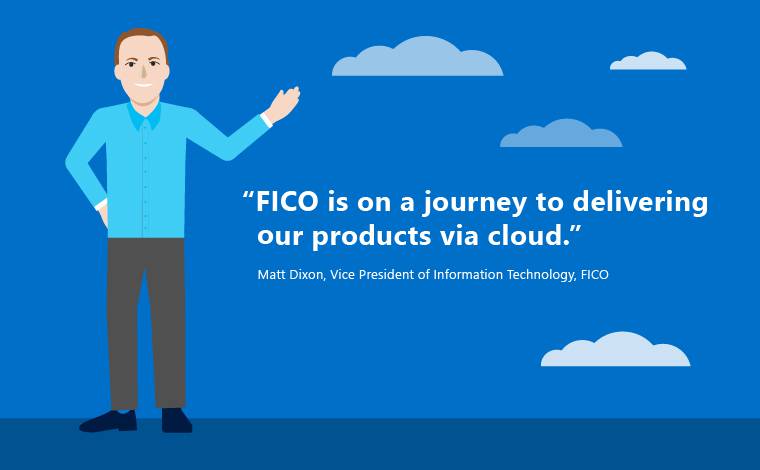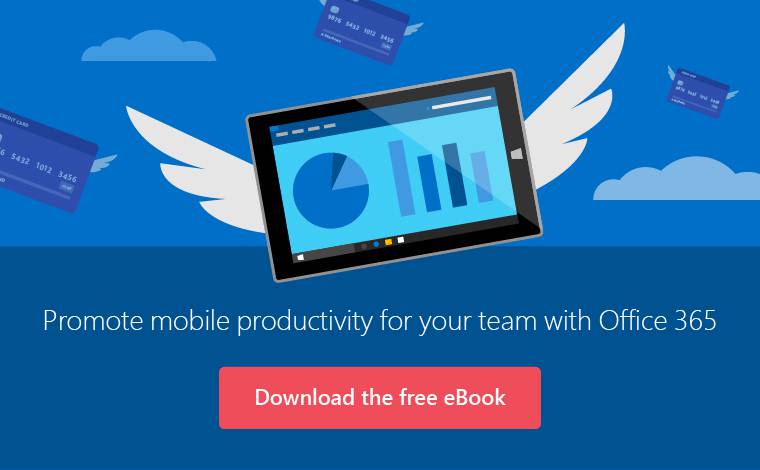
How FICO scores big with cloud-based teamwork and data solutions
| Focus on: Optimize Operations, Empower Employees |
Data rules everything around us. From traffic lights to medical records, those ones and zeros quickly dictate everything from the ads we see to the music we hear. As more and more organizations adopt big data strategies, we as consumers see exciting new innovations and solutions that leverage these possibilities. Smart phones, driver-less cars—this wave of data analytics brings the future to life in exciting ways that we would have never imagined even a generation ago.
That’s the data we know, these big impressive, world-changing inventions driven by the latest technology and the newest start-ups. But despite the shiny newness of whatever comes next, these tools are far from the first analytic solution working to change the world. For over sixty years, FICO has transformed consumers’ future dreams into today’s reality, using data analytics to create personalized FICO credit scores.

Since its founding in 1956, FICO has supplied more than 100 billion credit scores to lenders and consumers. While this service is how most Americans know FICO today, we often overlook the foundation of the organization itself—analytics. For decades, FICO has introduced groundbreaking innovations in Big Data analytics that predict consumer behavior. Today, those technology breakthroughs protect 2.5 billion credit cards worldwide, serve leading banks, insurers, retailers, telecommunications providers, and other firms globally.
For years, FICO relied on third-party servers for data stability, email hosting, and security. While there was a time that off-loading those services would have been innovative, today servers are only as available as the resources they require. In addition to resources, there is also the need for maintenance, backups, and constant scalability. Every year FICO undergoes 300 separate audits, which require that servers on-premise or off-site are secure and compliant.
“There’s a lot of questions that get asked, whether it be about email or other corporate systems,” FICO Vice President of Information Technology Matt Dixon says. “We’ve got to be in a strong position to accurately and reliably answer those, to show that we’re protecting those channels in a way that is above, or better yet beyond, industry-standard best practices.”
It’s that pursuit of innovation that brought FICO to the cloud. According to Dixon, the analytic titan hopes to transition all their corporate technology to the cloud within the next few years. Moving a titan takes energy, commitment, and support, and that’s what FICO found in Microsoft Azure and Office 365.
 Empowering employees to focus on creating value through collaborationWith Azure and Office 365, FICO can move away from tedious tasks like server maintenance and annual updates, and home in on what matters—delivering better products and services to their customers and shareholders.
Empowering employees to focus on creating value through collaborationWith Azure and Office 365, FICO can move away from tedious tasks like server maintenance and annual updates, and home in on what matters—delivering better products and services to their customers and shareholders.
“Moving to the cloud does a lot of things for us. It allows us to deliver more value every day, to spend that time on value-driven things,” Dixon says. “We don’t have to expend energy on the operational items related to patching, upgrades, or backups …instead we focus on value-added efforts such as an eDiscovery Project to uplift the legal team’s capabilities. Azure and Office365 enables our infrastructure engineers to focus on those revenue-generating applications.”
“We have less of a demand on our server team, on our storage team, on our data center team, on our network team. [Instead], they get to focus in on those delivery capabilities to bring additional kind of value to FICO shareholders.”
This added value doesn’t just speak to FICO’s current team members, but extends to how FICO attracts new talent. “We target the very best talent and these individuals have high expectations about the quality and effectiveness of the tools and systems we utilize. We continually partner with people in roles across our organization to ensure they understand how to take advantage of the latest and greatest tools we’ve adopted.”
 Optimizing operations for maximum efficiencyThese tools aren’t just allowing FICO employees to accomplish more high-value tasks, and retain high-value talent, they provide the compliance, security, and scalability that FICO needs to migrate with confidence. “If you look at legacy on-prem products, you do a major upgrade every 3-4 years,” Dixon states.
Optimizing operations for maximum efficiencyThese tools aren’t just allowing FICO employees to accomplish more high-value tasks, and retain high-value talent, they provide the compliance, security, and scalability that FICO needs to migrate with confidence. “If you look at legacy on-prem products, you do a major upgrade every 3-4 years,” Dixon states.
With Office365 and Azure, FICO can rest assured knowing that their storage needs are constantly adapting to the latest security and compliance protocols. Push-button licenses mean new emails are set up nearly instantly and that new storage space is always available, and that means greater efficiency and productivity.
It’s no surprise that security is paramount at an organization like FICO. “We have to hold our vendors to that standard, to ensure that we’re encrypting the data and protecting it and then when we have the data in different places to ensure that it’s not getting out, and that we’re protecting the data we are entrusted to keep.” With Azure threat management, secure networks, data encryption, and identity management ensure that FICO’s data remains safe and secure.
[inlinequote] “FICO is on a journey to delivering our products via cloud,” Matt Dixon, Vice President of Information Technology, FICO[/inlinequote]
FICO’s digital transformation is about more than just adoption, it’s about sustainability. “We have to continue to move to a cloud environment,” Dixon says, “It is part of our vision and strategy. It lands you in a spot that’s very positive for the future and allows you to continue to grow and scale.” As Matt and his team move towards the future, they’re seeing improved performance and collaboration from Office 365 tools like Skype and Exchange, maximized productivity and security features through Azure, and boldly setting the pace for the future of software analytics.
“There’s no way I would go back to where we were at before.”
Here at Microsoft, we wouldn’t either.
Related Content
-
Read more Real Stories of Digital Transformation
- Webcast: “5 Faces of Today’s Employees” Register now





